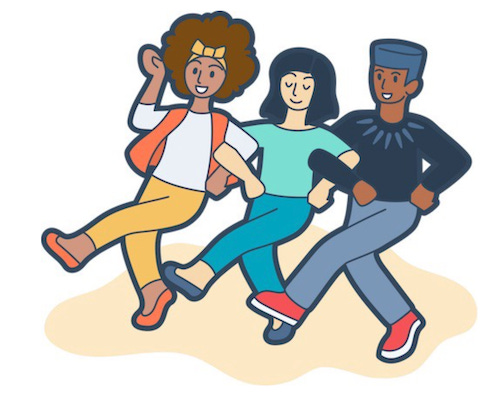Introduction:
I am currently enrolled in an online TESOL course, where I recently encountered the thought-provoking metaphor of "Language is a Cake." This metaphor has sparked a cascade of thoughts and reflections, leading me to consider the intricacies of language teaching and learning through an intersectional and inclusive education lens. In this article, I will explore the layers of this metaphor, highlighting the significance of embracing diversity and creating an inclusive environment within language education.
Layer 1: Recognizing Intersectionality in Language Learning
Just as a cake has multiple layers, language learners are diverse and multifaceted individuals. To ensure an inclusive language education, we must acknowledge and address the intersectionality of our students' identities. Factors such as culture, socio-economic background, gender, and ability play a significant role in shaping learners' experiences and language development. By embracing an intersectional perspective, we can design teaching strategies that honor and celebrate the rich tapestry of our students' identities.
Layer 2: Nurturing Inclusive Vocabulary Acquisition
Vocabulary acquisition forms the foundation of language learning. To foster inclusivity, it is essential to incorporate diverse contexts and experiences into vocabulary instruction. This means providing representation of various cultures, communities, and perspectives. Expanding learners' vocabulary through inclusive materials and resources enables them to communicate effectively and understand different cultural nuances.
Layer 3: Grammar and Syntax with Sensitivity
Just as the layers of a cake provide structure, grammar, and syntax form the framework of a language. In an inclusive language classroom, it is crucial to recognize and honor the linguistic diversity and dialects that learners bring. By adopting a sensitive approach to grammar instruction, we can validate and incorporate linguistic backgrounds and variations within our classrooms. This fosters a sense of belonging and empowers learners to communicate confidently and authentically.
Layer 4: Cultural Understanding as the Frosting
The frosting on the cake adds the final touch, making it visually appealing and enhancing the overall experience. Similarly, cultural understanding and context play a pivotal role in language teaching. In an inclusive language classroom, cultural understanding goes beyond mere tolerance; it involves actively engaging with diverse cultural expressions and identities. By incorporating a variety of cultural perspectives, we foster empathy, respect, and a deeper understanding of the interconnectedness of languages across the world.
To align and integrate these four layers, we need strategies/tools that help us build a holistic linguistic framework. Sharing some tools here for you to start off right away!
Picture-Based Vocabulary Building: Use picture cards or visuals to introduce and reinforce vocabulary in Indian languages. Encourage students to associate words with images, promoting visual learning and vocabulary retention.
Storytelling and Role-Playing: Incorporate storytelling and role-playing activities in Indian languages to engage students and develop their language skills. Encourage students to create and perform stories, dialogues, or skits, allowing them to apply their language knowledge in meaningful contexts.
Language Games: Integrate language games specific to Indian languages to make learning interactive and enjoyable. Games such as word puzzles, memory matching games, and language-based board games can reinforce vocabulary, grammar, and language usage skills.
Total Physical Response (TPR): Physical movement and gestures reinforce language comprehension. You can give commands, and students respond with actions. It will promote language acquisition and develops vocabulary, listening skills, and sentence structure.
Language Exchanges: Facilitate language exchanges where students converse with native speakers or fluent speakers of the Indian language they are learning. This could be through online platforms, guest speakers, or community connections. Language exchanges provide real-life language practice and cultural exposure.
Vocabulary Flashcards: Create vocabulary flashcards in Indian languages, featuring a word on one side and its translation or definition on the other. Use these flashcards for vocabulary drills, memory games, or individual study to reinforce word recognition and meaning.
Songs and Rhymes: Incorporate traditional songs and rhymes in Indian languages into your teaching. Singing and reciting rhymes help develop pronunciation, rhythm, and intonation skills. It also familiarizes students with the cultural aspects of the language.
Language-based Projects: Assign language-based projects where students research and present on specific topics related to Indian languages. This could include creating language learning materials, researching language usage in different regions of India, or exploring linguistic diversity in the country.
Language Immersion Days: Designate specific days or periods as language immersion days, where only the Indian language being taught is spoken in the classroom. This immersive experience encourages students to practice their language skills actively and build fluency.
Virtual Language Experiences: Utilize technology (if available) to provide virtual language experiences. Engage students in online language resources, language learning apps, or virtual cultural experiences related to Indian languages. This allows students to explore the language beyond the classroom walls.
Conclusion:
The "Language is a Cake" metaphor invites us to reflect on the layers of language teaching and learning. When approached through an intersectional and inclusive lens, language education becomes a transformative experience. By recognizing the intersectionality of language learners, nurturing inclusive vocabulary acquisition, approaching grammar with sensitivity, and embracing diverse cultural perspectives, we create an environment where all learners feel valued, respected, and empowered. In India, a country teeming with cultural diversity, an inclusive approach to language education becomes even more significant. Let us embrace the layers of language, celebrate our student's unique identities, and cultivate an inclusive space where language becomes a tool for connection, understanding, and positive change.
#LanguageIsACake #TESOL #InclusiveEducation #Intersectionality #LanguageTeaching #IndiaLanguageLearning



